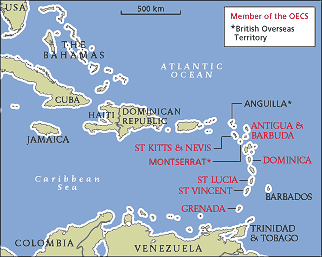
Globalisation was originally a construct of industrialised nations whose economic activity had developed sufficiently to withstand competition within their own borders from other countries, and who had the capability of exporting goods and services to other markets.
Their objective was to persuade other nations to open up their markets by liberalising trade, investment and international capital flows. So, the notion was promoted that more liberalised trade and investment would benefit the world, not just those industrialised countries that were developed enough to remove barriers to their own markets while penetrating the markets of others.
It was on this basis that the World Trade Organisation (the WTO) was started in 1995 on the founding and guiding principles of open borders, the guarantee of most-favoured-nation principle and non-discriminatory treatment.
When these arguments were being advanced and an architecture was being constructed at the WTO, few small states were involved in the discussions, and the peculiarity of their circumstances were not taken into account. By the time that many small states became members of the WTO, the rules had been set, including rules that today militate against their interest.
Few small states have benefited from the last 17 years of globalisation, the notable exception being Singapore for many reasons peculiar to that country. And, while unquestionably, in the last 2 decades large developing countries, such as China and India, have taken advantage of globalisation and benefitted enormously, the rest of the world has not gained the benefits it anticipated, except for a handful of countries in South-East Asia – the so-called “Asian Tigers”
.
Of the rest of the world, small economies in the Caribbean, taken collectively, did not gain at all.
A few statistics tell the story:
China’s share of the world’s gross domestic product (GDP) rose from 4.1% in 1990 to an astonishing 17.86% by 2016; India’s share grew from 3.6% to 7.3% over the same period.
The major advanced economies – the G7 – Canada, France, Germany, Italy, Japan, the United Kingdom and the United States of Amerca – fell from more than 50% in 1990 to 30.96% in 2016. But having started off from a high level of development, their market share has contributed to their growing prosperity.
The improvement in sub-Saharan Africa’s share of world GDP was less than half a percent; and the Middle East, and North Africa’s share was also marginal. The share of the countries that once formed the Soviet Union shrank as did the share of the developing countries in Europe. And the whole of Latin America and the Caribbean’s share of the world’s GDP actually declined from 10% to 7.9%.
Notwithstanding the increase in GDP share by some developing countries, it did little to close the gap between first world countries and developing nations. For example, while the income per head of population increased in the top 20 industrialised nations by roughly US$1,000 per year, people in countries such as Mexico, China and India received less than US$100. Further, as one example of how well the industrialised nations did, Germany’s real GDP grew by an average US$100 billion every year between 1990 and 2011 – a total of US$2 trillion.
Incidentally, the industrialised countries would have reaped a greater share of the world’s GDP were it not for the 2008 financial crisis which began in the US and spread to Europe. In the six years, between 2008 and 2014, productivity and employment shrank by 5.5%, but it was a problem of their own making, from which China, Asia and South East Asian nations were better protected.
Not to for the Caribbean where the effects of the financial crisis eroded the numbers of tourists, and the volume of foreign direct investment, contributing to a decline in GDP growth. As usual, the region contracted full blown pneumonia from the North American and European Union influenza.
In the event, the Caribbean region has benefitted little from globalisation as it relates to trade, investment and capital flows.
Indeed, for the Caribbean, globalization has been a one-way street of impositions by powerful countries: fiscal sovereignty has been violated by the strong; tax competition remains under threat from the mighty; economic growth and development have been impeded by unfair and unequal trade arrangements; and the real perils that global warming and sea-level rise pose to the very existence of Caribbean islands, are intensifying.
There has also been little reward to Caribbean jurisdictions from the international community, despite the region’s adherence to democracy and the rule of law; its faithfulness to international rules related to trade, investment and human rights; and its compliance with financial rules and regulations even though they have been extremely onerous.
Within the Caribbean itself, the well-known issues of lack of economies of scale; insufficient domestic capital formation to fund business projects; shortage of skilled labour; proneness to natural disasters; high public debt; and impediments to competitiveness continue.
In this connection, despite current forecasts by the International Monetary Fund of world growth rising from 3.1% in 2016 to 3.5% in 2017 and 3.6% in 2018, Caribbean countries, with a few exceptions, will continue to face fiscal constraints that will make it hard to manage financial, economic and other forms of volatility.
If there is not transformation in policy formulation and implementation within the Caribbean, and if the international community continues to be neglectful of the endemic, structural difficulties the region faces, the Caribbean is in danger of being relegated to the backwater of global existence.
(This article is excerpted from a Speech Sir Ronald delivered at a Conference on 27 April 2017 in the Turks and Caicos Islands on “Globalization and Small Island States: Challenges and Opportunities for the Caribbean”)